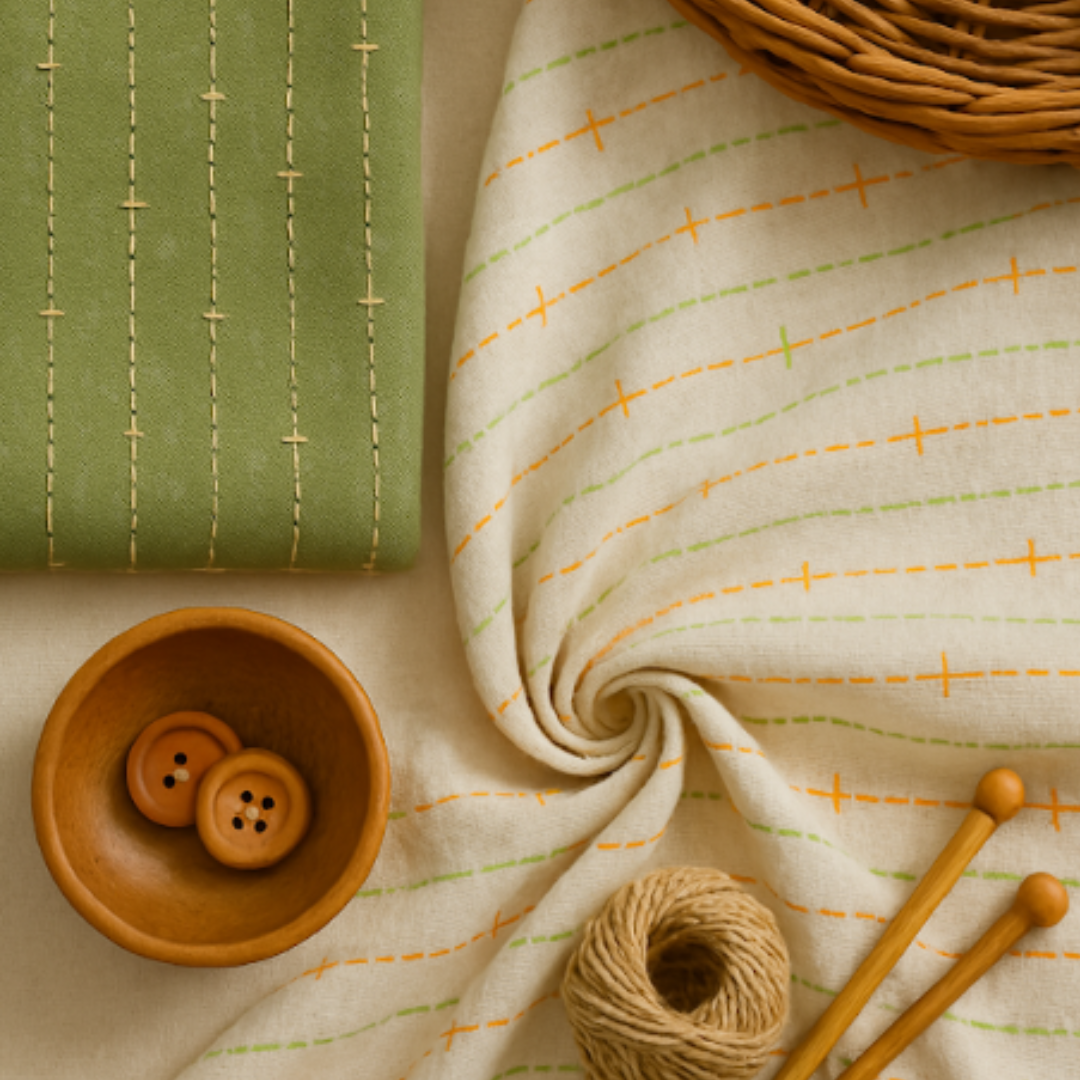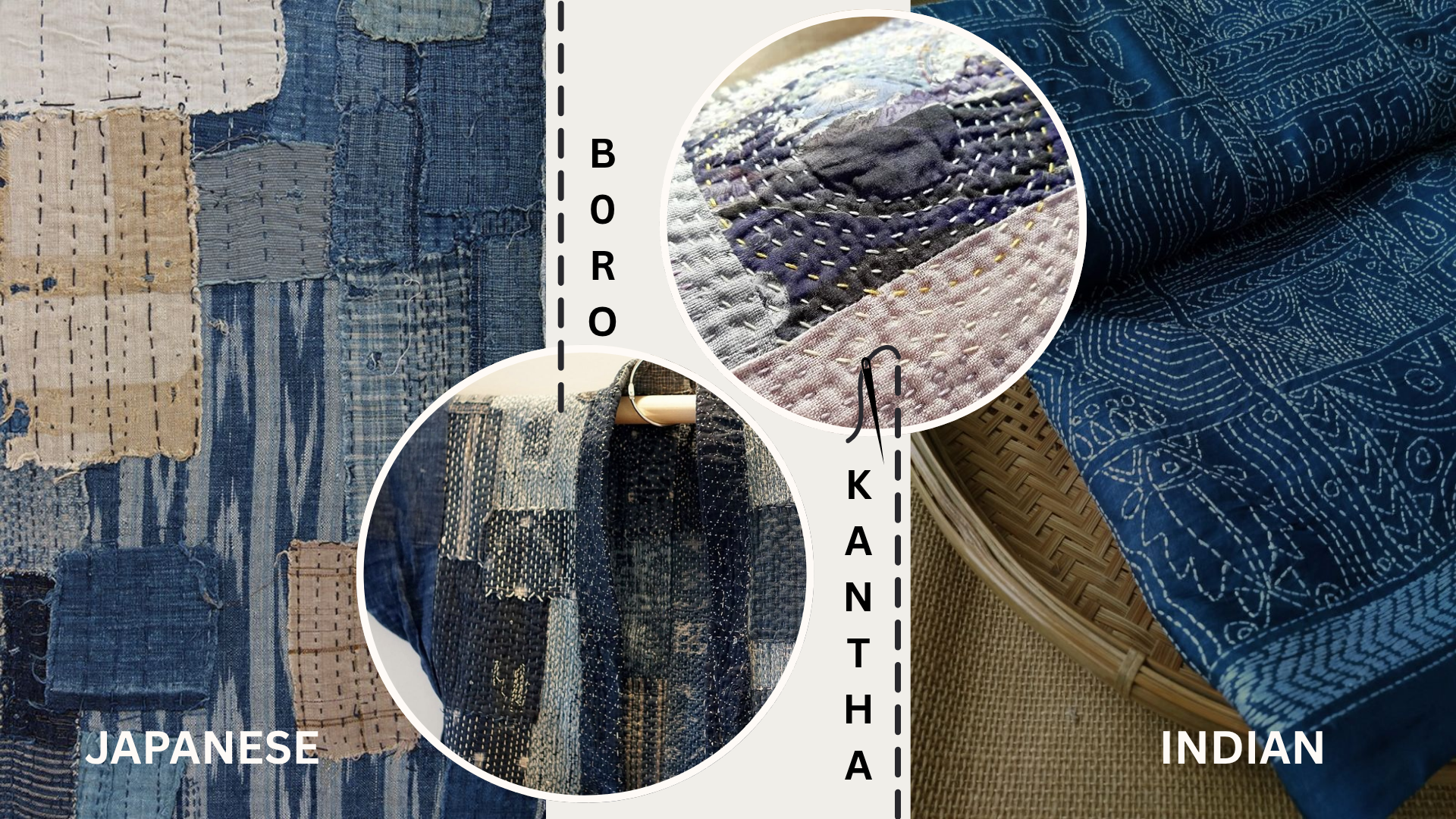
What Japanese Boro and Indian Kantha Can Teach Us About Repair Culture

In a world where fast fashion has made disposability the norm, two ancient textile traditions—Japanese Boro and Indian Kantha—are quietly leading a conversation about care, creativity, and circularity.
Both are born from necessity. Both are built on repetition, repair, and reverence for cloth. By unraveling their threads, we can rediscover a lost culture of mending and find inspiration for a more sustainable, mindful approach to our wardrobes.
What is a Boro: The Japanese Art of Mending with Intention
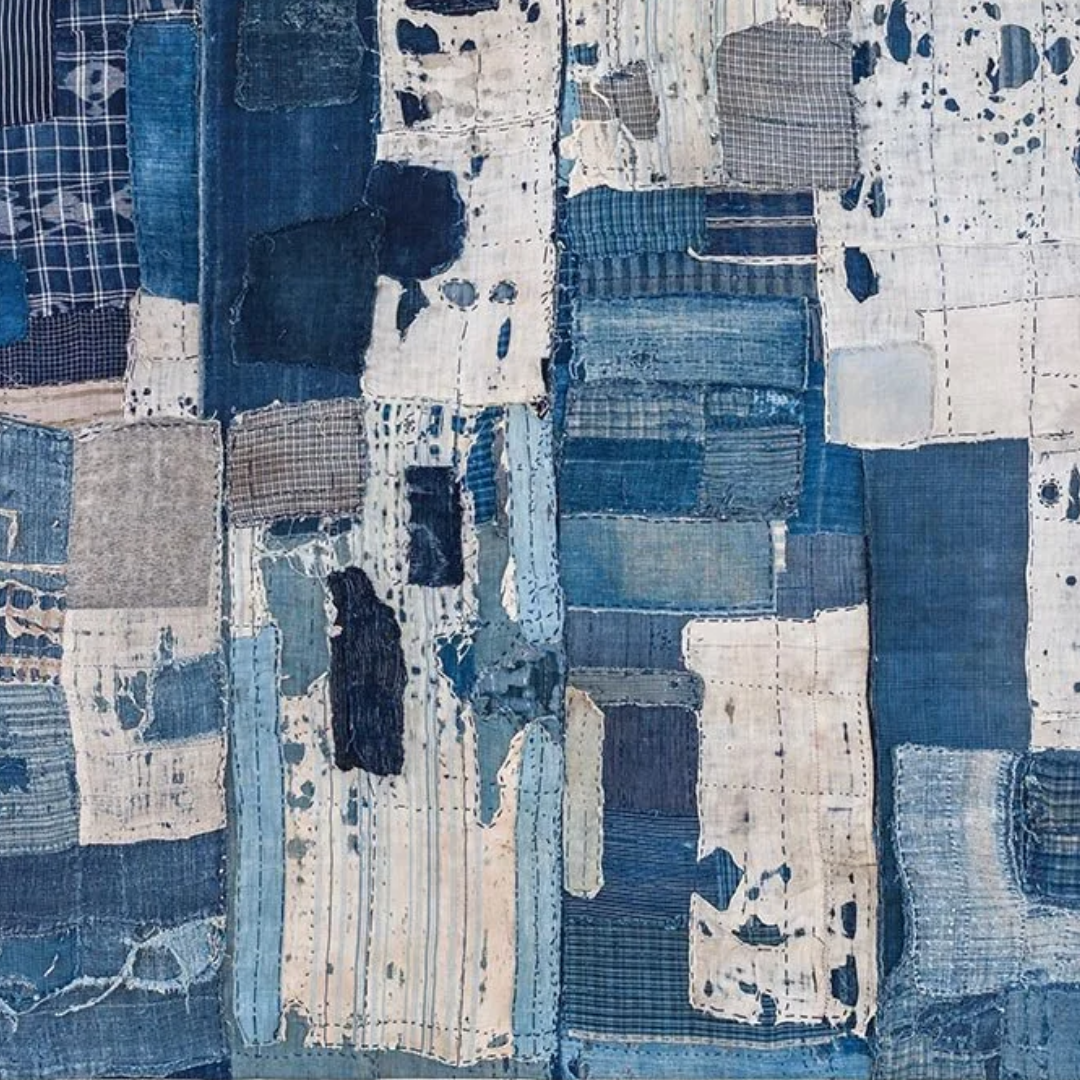
The word Boro translates to “rags” or “tattered cloth” in Japanese. But its practice is anything but careless. Originating in rural Japan during the Edo period, Boro developed as a survival technique among farming and working-class families.
Scarce resources made it necessary to patch, re-stitch, and layer fabrics—often indigo-dyed cotton—over generations.
Visual traits of Boro include:
- Sashiko stitching: white thread running stitches reinforcing fabric
- Indigo tones layered with care
- Patchwork patterns that are functional, not decorative—yet visually stunning
Boro reflects a philosophy of “mottainai”—a cultural concept that expresses regret over waste and encourages mindful reuse.
Kantha: Storytelling Through Stitch from Eastern India
Kantha, practiced in Bengal (both West Bengal and Bangladesh), is similarly rooted in necessity and expression.
Traditionally, worn-out saris and dhotis were layered and hand-stitched into quilts or wraps, using running stitches in white or colored thread.
Each Kantha piece became a blend of memory, functionality, and aesthetic beauty.
Common features of Kantha include:
- Fine, repetitive running stitch across layers
- Motifs like flora, fauna, and daily life
- A mix of personal storytelling and communal craft
Kantha was not only sustainable—it was intergenerational, emotional, and often meditative, passing down stories through needle and thread. These embroidered layers gave new life to the old cloth, creating soft quilts, Kantha blankets, wall hangings, kantha clothing and household items.
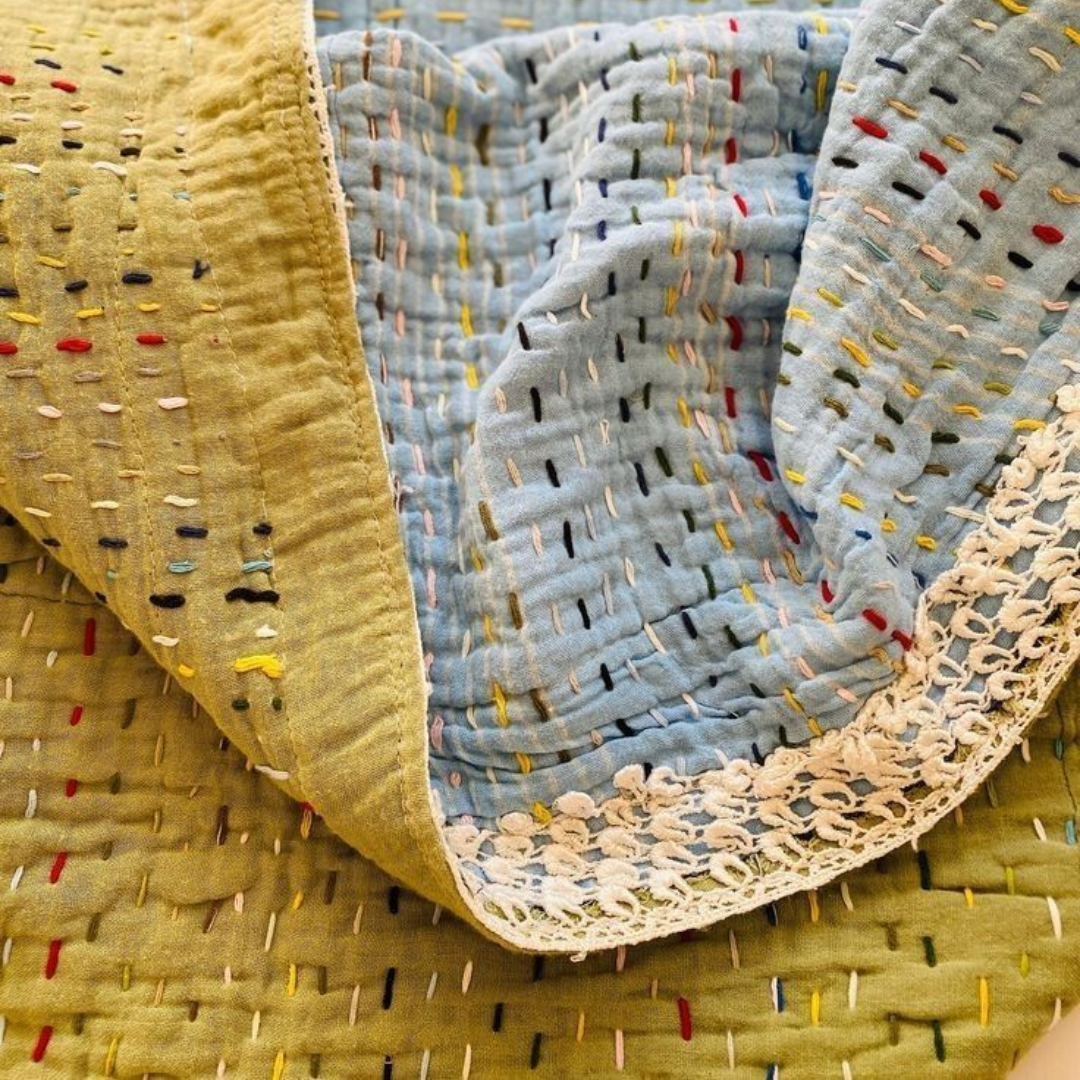
Japanese Boro and Kantha: A Modern Repair Culture
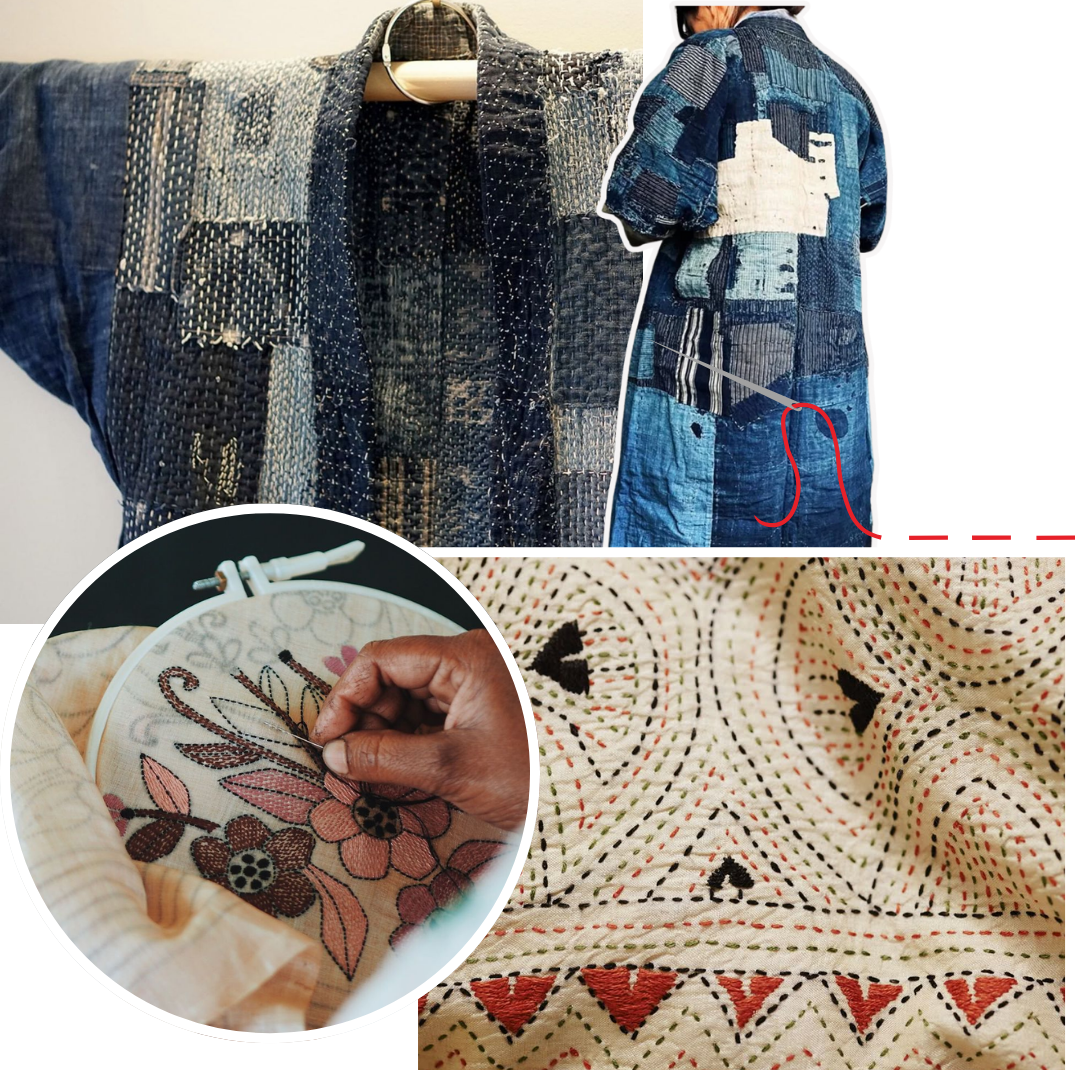
Both Japanese patchwork Boro and Kantha are not just techniques—they’re philosophies. They teach us that repair is not a compromise, but a creative, deeply human act. Here's what we can learn:
1. Repair is Resilience
In both cultures, repair extended the life of a textile not by hiding damage, but by embracing it—making every flaw a part of the story.
2. Sustainability is Inherited Wisdom
Long before “upcycling” became a buzzword, these communities practiced textile circularity out of respect, not trend. Their work shows that environmental consciousness can be cultural, not just technological.
3. Beauty Lies in Imperfection
Japanese Boro and Kantha celebrate irregularity, visible stitching, and asymmetry. In doing so, they invite us to rethink modern perfectionism in fashion.
4. Connecting with Our Clothes
Both stitching techniques preserve memory in material form—turning old clothes into emotional archives, not waste.
Reviving Repair Culture Today
At Anuprerna, we celebrate these traditions not as nostalgia—but as models for future-forward sustainability. Many of our artisans practice similar hand stitching, patchwork, and storytelling techniques in both clothing and home textiles.
Conclusion
True luxury may no longer lie in excess, but in care, continuity, and consciousness. As global fashion shifts toward circular design, Boro and Kantha remind us that the art of mending can be both revolutionary and deeply rooted.
So next time a button falls off or a seam tears—pause. That repair isn’t a flaw. It’s a place to begin again.
Both Kantha and Boro techniques are now seen in jackets, dresses, scarves, and even accessories. They add texture, contrast, and cultural value to modern silhouettes. At Anuprerna, we work with artisans who apply traditional Kantha stitching to textiles tailored for global design needs.
related questions
What is a Boro in Japanese culture?
arrow_drop_downBoro refers to the traditional Japanese practice of mending and reinforcing textiles through patchwork and visible stitching, often using indigo-dyed cotton. Originating among rural communities, Boro wasn’t just about preservation—it was an art form born from necessity, deeply rooted in sustainability and minimal waste.
What is Kantha embroidery?
arrow_drop_downKantha is a hand-stitched textile tradition from Eastern India and Bangladesh. It involves layering old saris or cloths and sewing them together using fine, repetitive running stitches. The technique is often used to create quilts, throws, and now even garments—blending functionality with storytelling and artistic heritage.
How are Boro and Kantha similar?
arrow_drop_downBoth Boro and Kantha emerged from resource-conscious cultures and represent the philosophy of repair over discard. They use simple stitches to extend a textile’s life while adding emotional, visual, and cultural depth. Today, both are celebrated in the global fashion world for their beauty and sustainability.
Can Kantha or Boro be worn in contemporary fashion?
arrow_drop_downAbsolutely! Both Kantha and Boro techniques are now seen in jackets, dresses, scarves, and even accessories. They add texture, contrast, and cultural value to modern silhouettes. At Anuprerna, we work with artisans who apply traditional Kantha stitching to textiles tailored for global design needs.
More Blogs
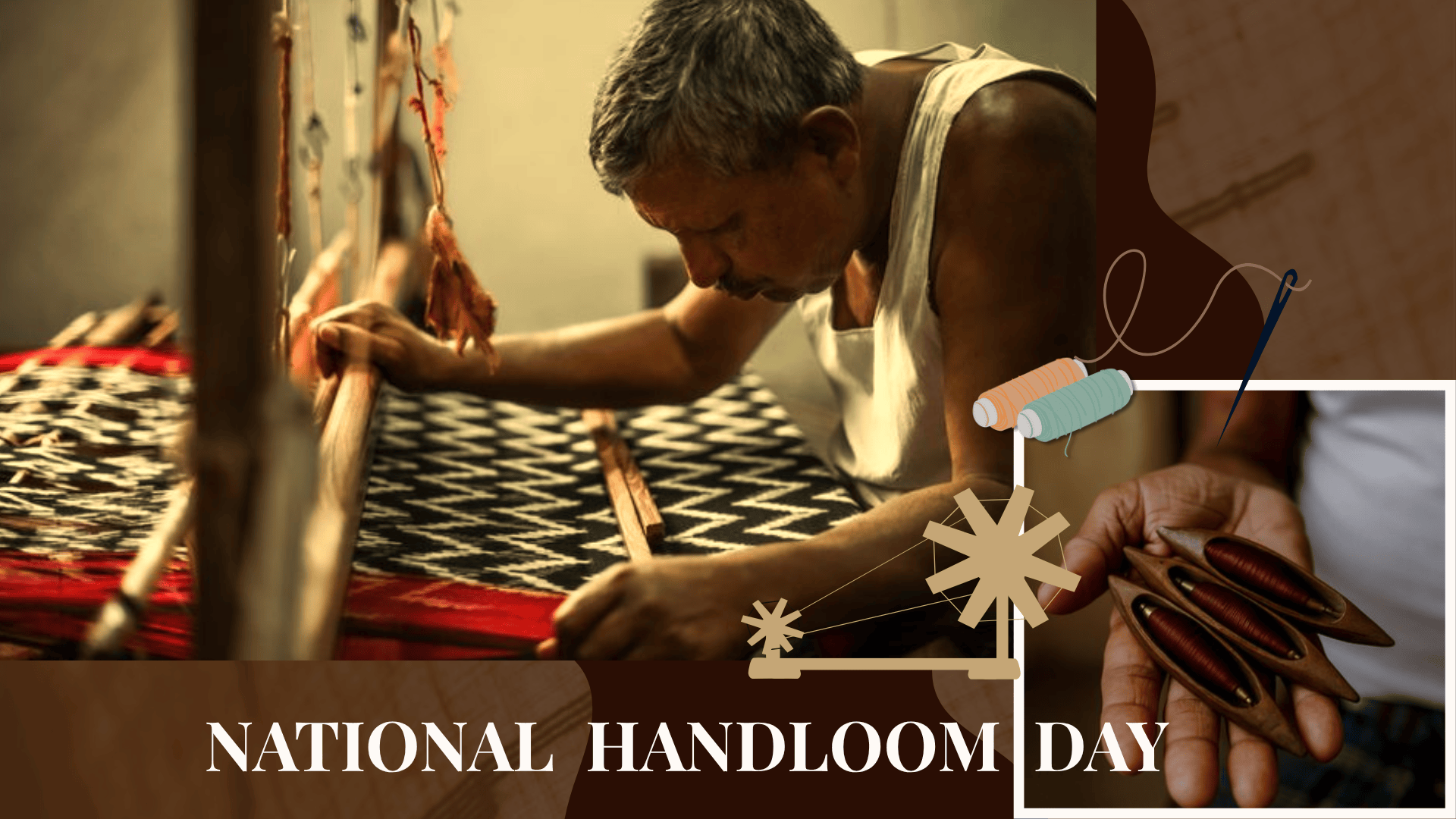
national handloom day 2025: 10 must-have handloom textiles from across west bengal and india
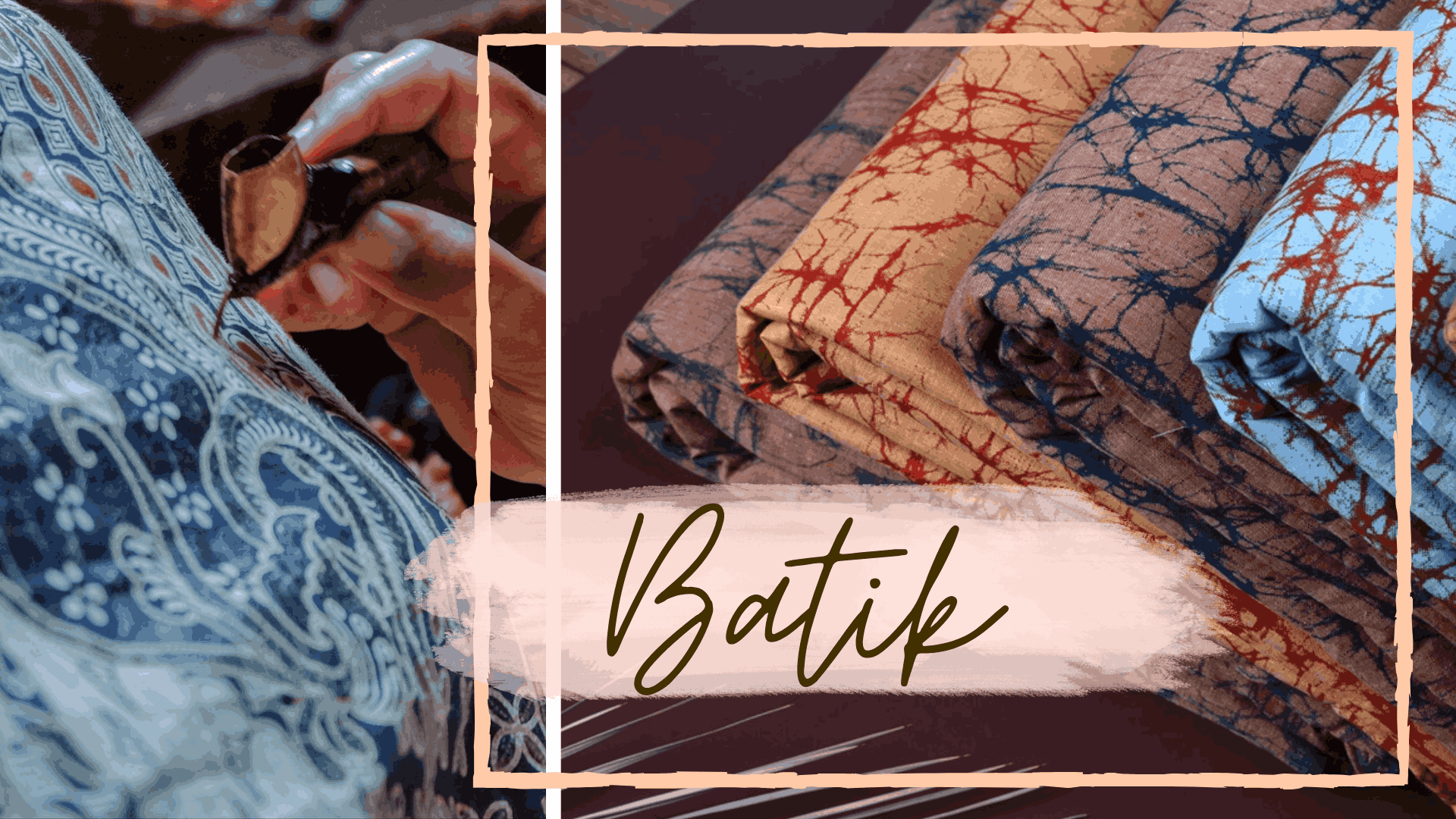
the living art of batik fabrics: sustainable traditions

understanding mulberry silk quality: what designers often miss and why it matters

raschel knit fabric explained: how it’s made, where it’s used, and how it compares

a handloom style guide: choosing the right weaves for your body type

summer 2026 textile trends: the season of slow luxury
